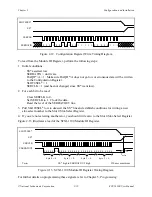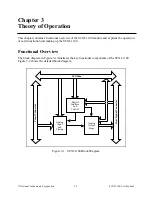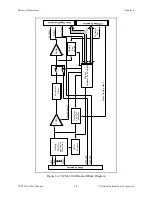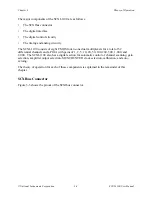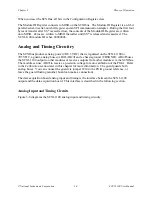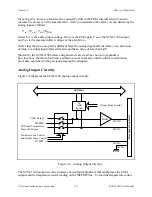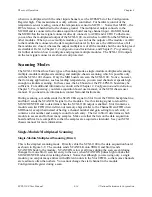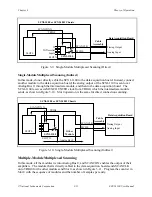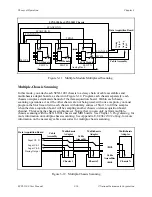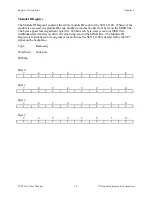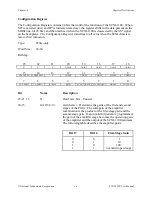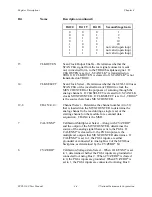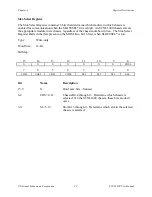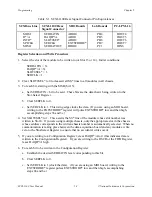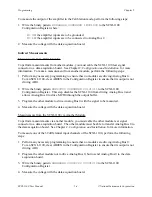
Theory of Operation
Chapter 3
SCXI-1100 User Manual
3-14
© National Instruments Corporation
when it is multiplexed with the other input channels, set the RTEMP bit of the Configuration
Register high. This measurement is only software controlled. For hardware control of the
temperature sensor reading, connect the temperature sensor to MCH1+. Notice that MCH1-, the
DTS reference, is hardwired to the chassis ground. The multiplexer output connects to the
MCH0
±
and is connected to the data acquisition board analog channel input. On MIO boards,
the MCH0
±
on the rear signal connector directly connects to ACH0 and ACH8. Furthermore,
you can bus the multiplexed output of the SCXI-1100 via switches to AB0
±
on the SCXIbus to
other modules. When you use multiple modules, you can bus the outputs of the module via AB0
to the module that connects to the data acquisition board. In this case, the AB0 switches of all
the modules are closed, whereas the output multiplexers of all the modules but the one being read
are disabled. Refer to Chapter 2, Configuration and Installation, and Chapter 5, Programming,
for further details on how to configure and program multiple modules. The SCXI-1100 outputs
on the rear signal connector are short-circuit protected.
Scanning Modes
The SCXI-1100 has three basic types of Scanning modes–single-module multiplexed scanning,
multiple-module multiplexed scanning, and multiple-chassis scanning, which is possible only
with the SCXI-1001 chassis. Only the MIO boards can scan the SCXI-1100. Notice, however,
that for many applications, such as reading temperatures, you can read channels at speeds high
enough to simulate scanning. In these cases, the Lab boards or the PC-LPM-16 board may be
sufficient. For additional information, consult either Chapter 2, Configuration and Installation,
Chapter 5, Programming, your data acquisition board user manual, or the SCXI chassis user
manual. If you need more information, contact National Instruments.
During scanning, a module sends the SCANCLK signal to Slot 0 over the TRIG0 backplane line,
and Slot 0 sends the SCANCON signal to the modules. Use this timing signal to reload the
MUXCOUNTER and to determine when the SCXI-1100 output is enabled. Slot 0 contains a
module scan list FIFO (first-in-first-out memory chip) similar to the Channel/Gain FIFO on an
MIO board, except that instead of having a channel number and gain setting for each entry, it
contains a slot number and a sample count for each entry. The list in Slot 0 determines which
module to access and for how many samples. Make sure that the lists on the data acquisition
board and Slot 0 are compatible so that the samples are acquired as intended. See your SCXI
chassis manual for more information.
Single-Module Multiplexed Scanning
Single-Module Multiplexed Scanning (Direct)
This is the simplest scanning mode. Directly cable the SCXI-1100 to the data acquisition board
as shown in Figure 3-9. The module sends SCANCLK onto TRIG0, and Slot 0 sends
SCANCON back to the module. SCANCON is low at all times during the scan except during
changes from one Slot 0 scan list entry to the next, when SCANCON pulses high to make the
MUXCOUNTER reload its starting channel. Notice that although you are using only a single
module, you can put many entries with different counts in the Slot 0 FIFO, so that some channels
are read more often than others. You cannot change the start channel in the module
Configuration Register during a scan.

